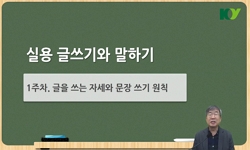The aim of this paper is to claim that the first stanza of T. S. Eliot’s The Waste Land has the narrative structure of the dramatic monologue. To clarify the claim, I first refute the extant views that the stanza is uttered by two speakers, the poet...
http://chineseinput.net/에서 pinyin(병음)방식으로 중국어를 변환할 수 있습니다.
변환된 중국어를 복사하여 사용하시면 됩니다.
- 中文 을 입력하시려면 zhongwen을 입력하시고 space를누르시면됩니다.
- 北京 을 입력하시려면 beijing을 입력하시고 space를 누르시면 됩니다.
https://www.riss.kr/link?id=A109353640
- 저자
- 발행기관
- 학술지명
- 권호사항
-
발행연도
2018
-
작성언어
-
-
주제어
극적 독백 ; 서술구조 ; 화자 ; 황무지 ; 엘리엇 ; dramatic monologue ; narrative structure ; speaker ; The Waste Land ; T. S. Eliot
-
KDC
841
-
등재정보
KCI등재
-
자료형태
학술저널
- 발행기관 URL
-
수록면
51-78(28쪽)
- 제공처
- 소장기관
-
0
상세조회 -
0
다운로드
부가정보
다국어 초록 (Multilingual Abstract)
The aim of this paper is to claim that the first stanza of T. S. Eliot’s The Waste Land has the narrative structure of the dramatic monologue. To clarify the claim, I first refute the extant views that the stanza is uttered by two speakers, the poet/narrator and Marie. Such views are contradictory to one another as well as not clearly justified by the context of the poem, since they are not reliably founded on the compositions of the text. Instead, they depend on the preconceptions imbued by biographical and historical information about the poet and Countess Marie Larisch. To the contrary, this paper understands the whole stanza as spoken by a single person to an auditor in the same poetic situation. As Robert Langbaum and other explicators unanimously indicate, “some interplay of the speaker and the listener,” among others, is the most unfailing characteristic of the dramatic monologue. My contextual analysis of the stanza points out line 12, spoken in German, and line 17, “In the mountains, there you feel free,” as two decisive evidences of such dramatic interplay taking place. Thus, in the first stanza of The Waste Land, Eliot is not featuring two (or, even, more) speakers but is presenting the single speaker Marie, who relates some fragments of her present and past life and psyche to her specific listener in the form of the dramatic monologue.
목차 (Table of Contents)
- Ⅰ. 머리말
- Ⅱ. 복수(複數) 화자론
- Ⅲ. 극적 독백의 서술구조
- Ⅳ. 맺음말
- 인용문헌
- Ⅰ. 머리말
- Ⅱ. 복수(複數) 화자론
- Ⅲ. 극적 독백의 서술구조
- Ⅳ. 맺음말
- 인용문헌
동일학술지(권/호) 다른 논문
-
에밀리 디킨슨 시의 개성화 과정-분석심리학의 관점에서-
- 한국현대영미시학회
- 이양숙
- 2018
- KCI등재
-
Notes of an Apprentice: Non-Existent Facts—Poetry Reading and Discussion
- 한국현대영미시학회
- 굿맨로렌
- 2018
- KCI등재
-
유목민의 혁명: 캐씨 박 홍의 『댄스 댄스 혁명』의 들뢰즈적 읽기
- 한국현대영미시학회
- 윤희수
- 2018
- KCI등재
-
Entering No-Man’s-Land: The Interior of Homines Sacri in David Jones’s In Parenthesis
- 한국현대영미시학회
- 최현빈
- 2018
- KCI등재





 스콜라
스콜라







